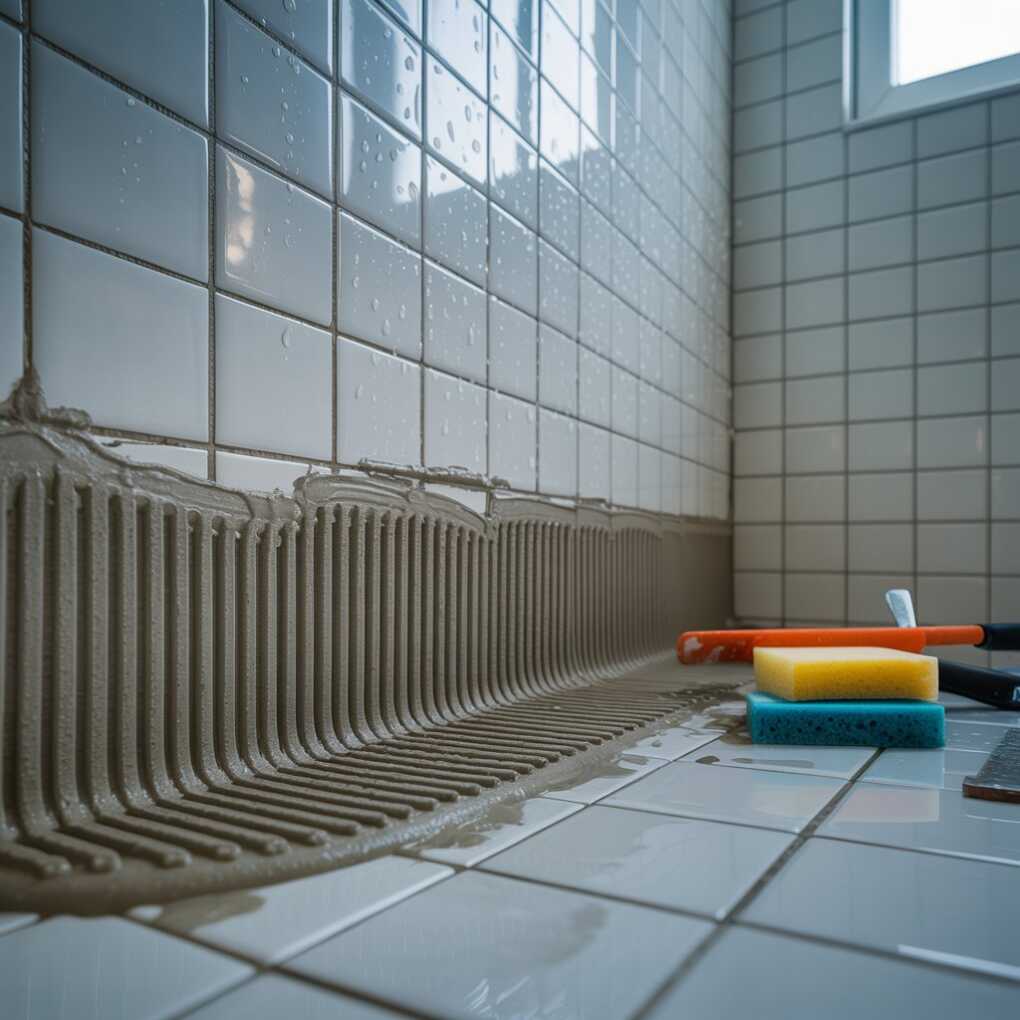Water dripping where it shouldn’t? Black gunk creeping along your grout lines? Cracked tiles making your daily shower feel like a hazard zone? Mate, you’re not alone. Australian homes battle unique bathroom beasts. Our brutal humidity, combined with often hard or salty water, wreaks havoc on showers faster than you can say “mould bloom”. Trying a quick DIY fix might seem tempting, but when it comes to waterproofing and lasting results, getting it wrong isn’t just messy – it’s costly. This guide cuts through the confusion, helping you find the right shower regrouting expert Down Under.

Common Shower Nightmares in the Aussie Home
Let’s face it. Australian bathrooms endure a lot. Coastal salt spray. Inland dust and heat. Universal humidity spikes. It’s the perfect storm for shower failures.
- Leaks & Water Damage: That slow drip behind the wall? It’s stealthy. Before you know it, you’ve got rotten timber frames, soggy plasterboard, and potential structural drama. Water finds a way, especially when grout fails or membranes crack. Ignore it, and you’re looking at major reno bills. Trust me, seen it happen.
- Mould & Mildew Menace: Our humid climate is mould’s best mate. It thrives in warm, wet shower corners. Black, pink, green slime – it’s not just ugly, it’s a health hazard. Breathing that stuff in? No thanks. Standard cleaning often just scratches the surface if the grout’s porous underneath.
- Cracked Tiles & Grout Decay: Constant expansion and contraction from heat and water wear grout down. It cracks, crumbles, and falls out. Tiles can loosen or crack too. Looks shabby. Feels shabby. Compromises your shower’s entire integrity. Time takes its toll, but Aussie conditions accelerate it.
Pro Tip: Spot a leak? Act fast. Turn off the shower tap firmly and minimise use. Place towels to catch drips and call a pro ASAP. Water damage escalates quickly!
Why Going DIY Down Under Can Go Downhill
Yeah, YouTube makes it look easy. Scoop out old grout, slap in new, right? Wrong. Especially here. Aussie bathrooms have rules. Strict ones.
- Building Standards Bite: Waterproofing isn’t optional; it’s law (AS 3740). Messing with the waterproof membrane behind your tiles? That’s high-risk territory. A botched DIY job can invalidate insurance if leaks cause damage later. Not worth the gamble.
- Waterproofing is Everything: It’s not just about the grout you see. It’s the hidden layer protecting your home. DIYers often miss underlying membrane damage or fail to reinstate it correctly during regrouting. This is where leaks really start. Professionals know how to assess and repair the whole system.
- Knowing When to Fold ‘Em: Replacing a single tile or a tiny patch of grout? Maybe DIY is okay. But widespread grout failure, persistent leaks, soggy walls, or loose tiles? That screams “Call the Experts”. If the problem feels bigger than a tube of silicone, it probably is. Save yourself the headache and potential disaster.
“I tried patching the grout myself near the niche. Looked okay for a month. Then the wall behind turned mushy. Cost me triple what a pro regrout would have.” – Dave, Brisbane Homeowner.
Choosing Your Aussie Shower Repair Champion: What Matters
Not all tradies are created equal. Finding the right shower regrouting specialist is key to a lasting fix. Here’s your checklist:
- Licences & Qualifications: This is non-negotiable.
- Waterproofing Licence: Essential in most states (NSW, VIC, QLD etc.). Verify it through your state’s building authority (e.g., QBCC, VBA, Fair Trading NSW).
- Trade Qualifications: Carpentry, tiling, waterproofing certifications show proper training.
- Insurance: Valid Public Liability Insurance (usually $5-20 million). Ask for proof!
- Ask the Right Questions:
- “Are you licensed for bathroom waterproofing in [Your State]?”
- “Can you provide a detailed written quote outlining the process and materials?”
- “What warranty do you offer on your regrouting and waterproofing work?” (Minimum 1 year, 3+ is better).
- “How do you handle underlying issues like membrane damage if found?”
- “Do you use mould-inhibiting grout suitable for Aussie water?” (Epoxy or advanced polymer-modified is best).
- “Can you provide references from recent local jobs?”
- Experience & Reputation: Look for specialists, not general handymen. Check online reviews (Google, ProductReview.com.au) and ask neighbours. Reputable services like The Grout Guy in Perth offer comprehensive solutions specifically tailored to combat local conditions like harsh water and humidity. Similar specialists exist nationwide – find your local expert. Experience with Australian homes matters.
Comparison: DIY vs. Hiring a Pro
| Feature | DIY Regrouting | Professional Regrouting Service |
|---|---|---|
| Cost | Lower upfront cost | Higher initial investment |
| Expertise | Limited, risk of error | Licensed, trained, experienced |
| Compliance | Risk of non-compliance (AS3740) | Guaranteed compliance & certification |
| Waterproofing | Often incomplete or incorrect | Full assessment & repair |
| Materials | Consumer-grade, limited choice | Professional-grade, mould-resistant |
| Longevity | Short-term fix, may fail | Long-lasting, warrantied solution |
| Time/Effort | High, messy, frustrating | Efficient, handled by professionals |
| Risk | High (water damage, void insurance) | Low, insured work |
The Pro Regrouting Process: What to Expect
Okay, you’ve hired the experts. What now? Knowing the drill helps.
- The Assessment: A good tradie won’t just quote blind. They’ll inspect thoroughly. Probing grout, checking for hollow tiles, assessing moisture levels, looking for leaks. They need the full picture. Perth homeowners, for instance, can expect detailed assessments and customised solutions from experienced shower regrouting experts serving Western Australia. This local knowledge is gold.
- Prep is King: Proper prep takes time. Covering floors, removing silicone sealant, meticulously grinding out all the old, failed grout without damaging tiles. Deep cleaning to kill mould spores. Drying everything properly. This step is crucial and often underestimated.
- The Magic Happens (Regrouting & Resealing): Applying the new grout evenly and professionally. Using the right grout – modern polymer-modified or epoxy grouts are vastly superior in Aussie conditions. They repel water and resist mould much better than old-fashioned cement grout. Then, precise silicone sealing around edges, corners, and fixtures with high-quality, mould-resistant sealant.
- Curing & Clean Up: Grout needs time to cure properly (usually 24-72 hours before heavy use). Pros will advise on this. Then, a thorough clean-up leaving your bathroom tidy.
- Timeframes & Disruption: Most standard shower regrouts take 1-2 days. Expect 24-48 hours where you can’t use the shower after grout application. Good communication from your tradie is key here. Minimal mess, but some dust from grinding is inevitable – they should contain it well.
Pro Tip: Schedule regrouting for a time when you can manage without that shower for 2-3 days. Plan ahead!
Keeping Your Revived Shower Shipshape in Australia
The job’s done. Looks brilliant! Now, keep it that way. Aussie showers need TLC.
- Ventilation is Vital: Run the exhaust fan during and for at least 20 minutes after every shower. Seriously. Open a window if possible. Get that humid air out.
- Squeegee Squad: Get into the habit. A quick squeegee down the walls and screen after each shower works wonders. Removes standing water where mould loves to grow. Takes 30 seconds. Worth it.
- Cleaning Smart: Harsh chemicals can damage grout and sealant. Use pH-neutral cleaners designed for bathrooms. For mould-prone spots, a diluted white vinegar spray (1 part vinegar to 4 parts water) left for 10 mins before rinsing works well on non-stone surfaces. Avoid bleach-heavy products long-term.
- Target Hard Water: If you’ve got it (looking at you, Adelaide, Perth, many regional areas!), use cleaners specifically formulated for limescale. Wipe down fixtures regularly. Consider a water softener if it’s severe.
- Sealant Check-Ups: Inspect silicone sealant every 6 months. Look for gaps, peeling, or mould growth under the sealant. Re-seal small areas promptly before water gets behind.
- Professional Check-In: Even with good care, grout and sealant degrade. Consider a professional inspection/maintenance clean every 2-3 years. They can spot early issues and refresh sealants, preventing major repairs later. Services like The Grout Guy often offer maintenance plans.
Conclusion: Invest in Peace of Mind
A failing shower isn’t just an eyesore; it’s a threat to your home’s structure and your family’s health. Australian conditions demand robust solutions. While DIY might tempt your wallet, the risks – especially around waterproofing compliance and hidden damage – are simply too high.
Investing in a licensed, experienced shower regrouting expert is investing in your home’s longevity and your own peace of mind. They bring the right skills, the right materials, and crucially, the understanding of our unique climate and building standards. Look for qualifications, insurance, local experience, and clear warranties. Ask the tough questions.
Get the job done properly. Protect your biggest asset. Then step back into a shower that’s not just fixed, but built to last the Australian test. Enjoy that refreshing, leak-free, mould-resistant bliss. You deserve it.
